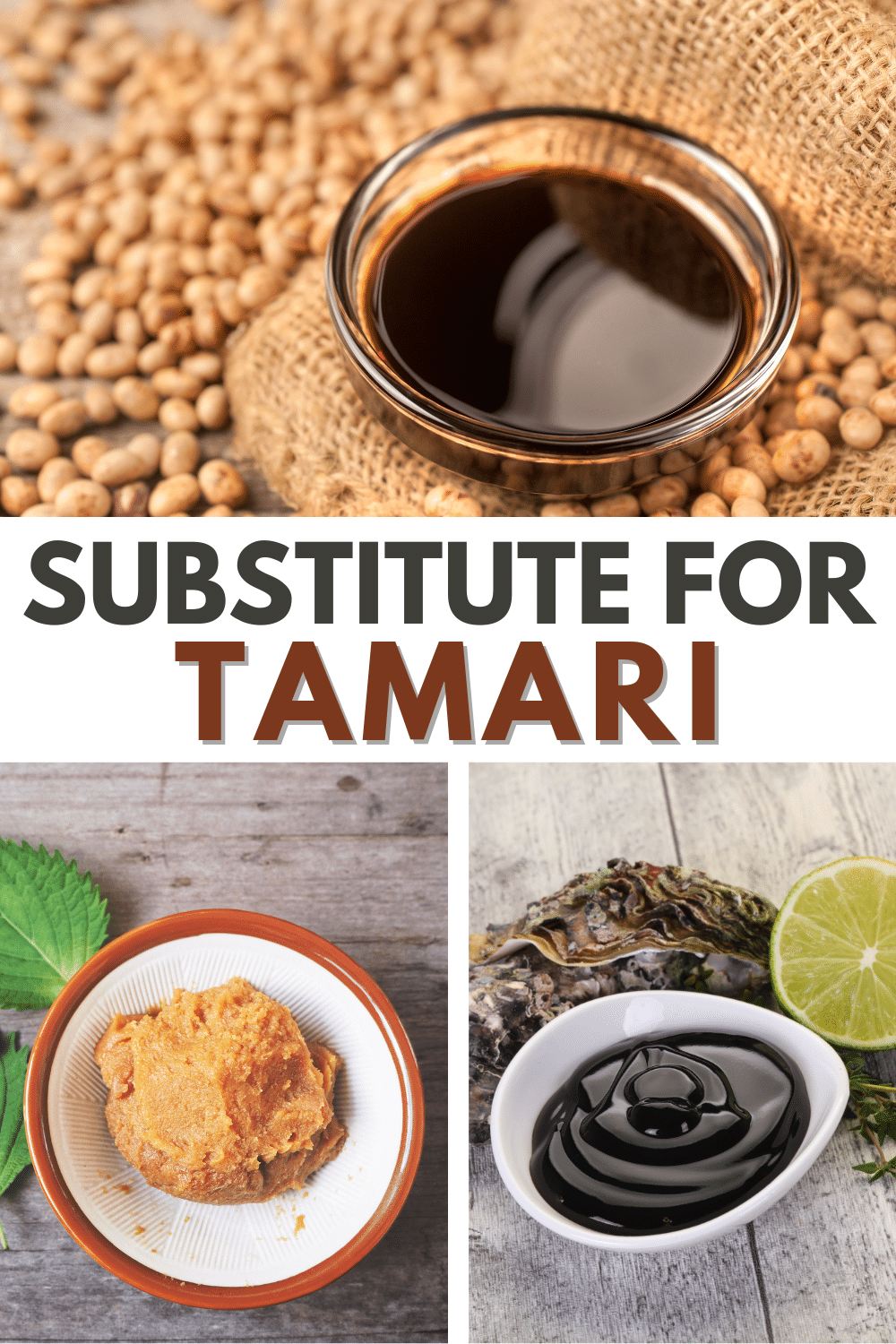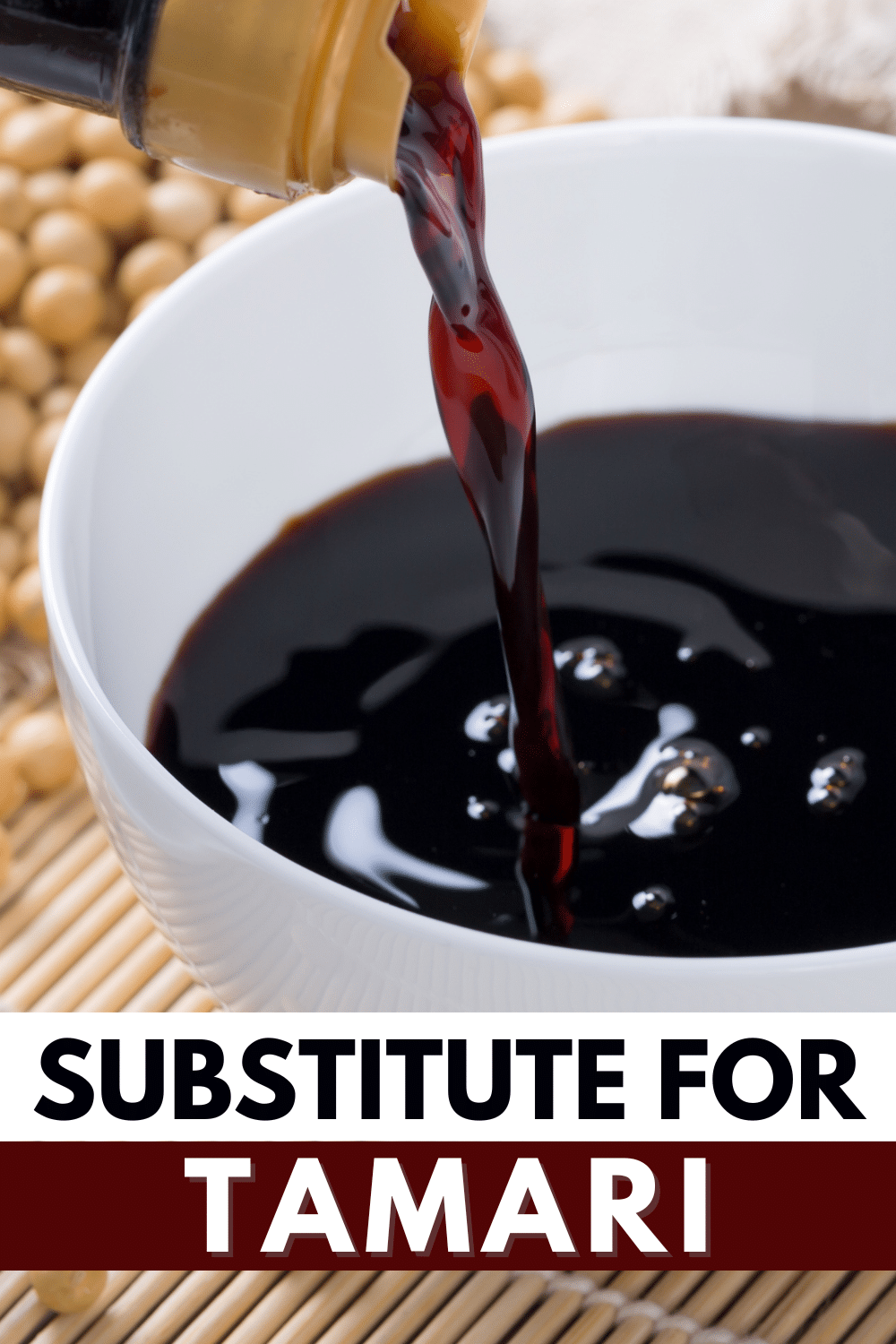Plenty of recipes call for tamari, a Japanese soy sauce. However, it may not always be available, or you may prefer not to use it due to health restrictions or taste preferences, so you’ll need a substitute for tamari.
Fortunately, it’s very easy to find substitutes for tamari soy sauce that can be used in your recipes. Many ingredients have textures and flavors that are similar to tamari, giving you plenty of room for creativity in your cooking.

Jump to:
What is Tamari?
Tamari is a Japanese type of soy sauce made from fermented soybeans, which are by-products of miso paste. Also known as dark soy sauce, it’s popular for its rich umami flavor and thick consistency that highlights the savory taste of many recipes.
For decades, tamari has been used as a gluten-free substitute for soy sauce. However, some recipes, particularly for Asian cuisines, specifically call for tamari to be used thanks to its more nuanced flavor.
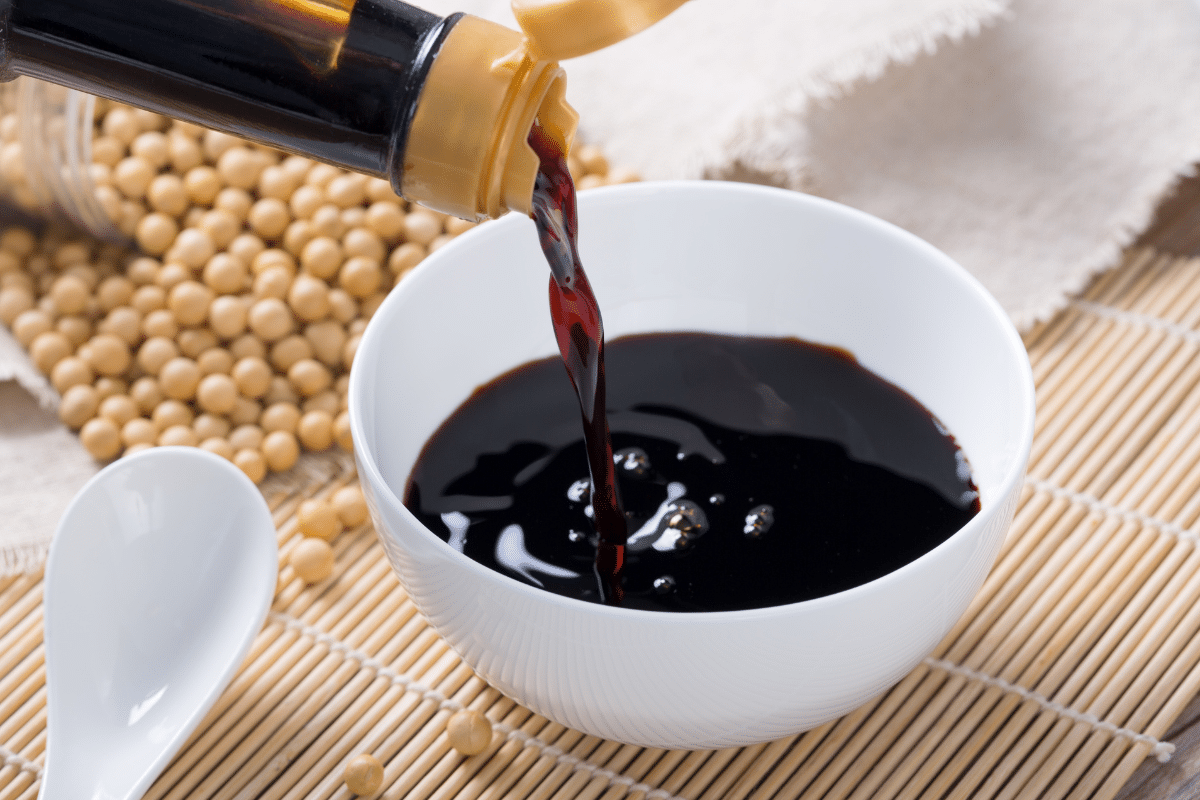
Tamari is a highly versatile condiment used in various dishes, such as stews, marinades, and dipping sauces. I often use it to add a delicious umami flavor to recipes featuring noodles, dumplings, and vegetables.
Best Tamari Substitutes And Their Pros And Cons
Soy Sauce
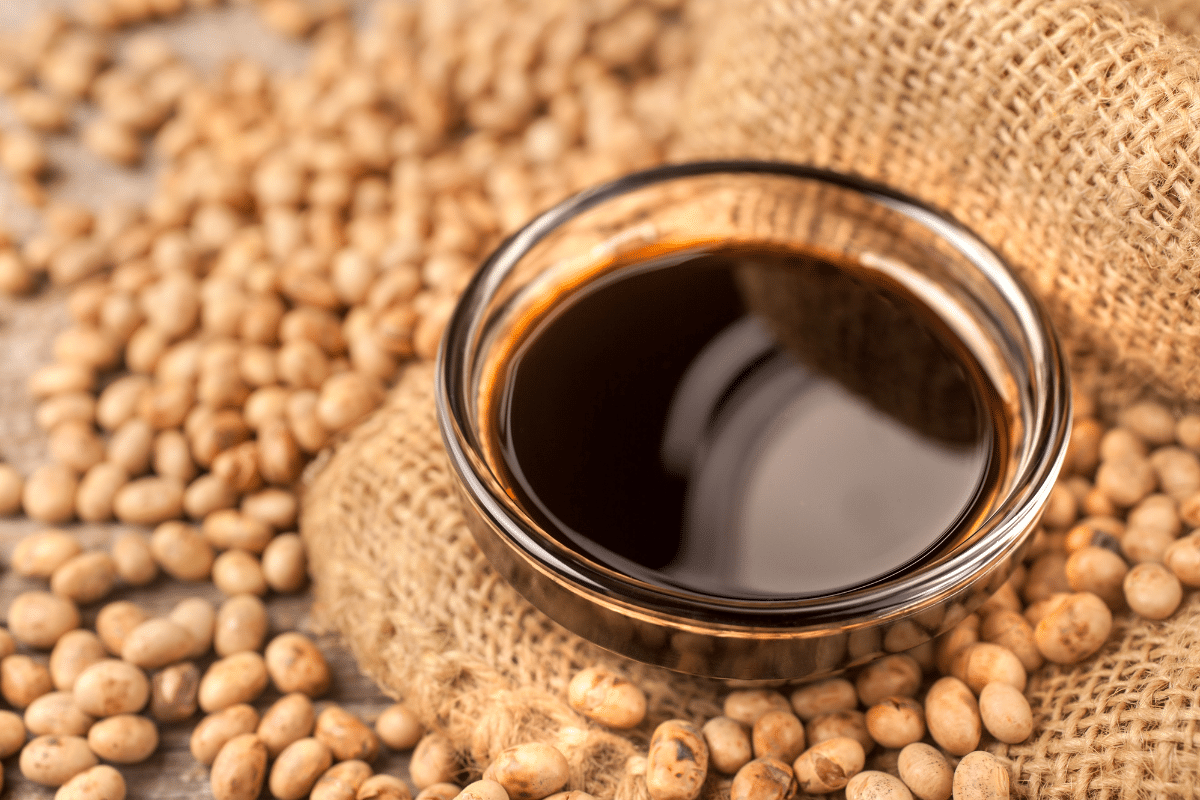
Tamari and soy sauce have been used interchangeably for decades, making them the primary substitutes for each other. Both of these sauces provide an umami flavor and provide a mild level of saltiness to dishes.
Taste-wise, your dish won’t be too different when you use soy sauce instead of tamari.
Pros:
- Regular soy sauce is one of the most accessible ingredients on this list.
- You can replace tamari with soy sauce in a 1:1 ratio, which makes it a simple substitution.
Cons:
- Light soy sauce can taste slightly more salty than tamari.
- Tamari has a sweeter flavor than soy sauce. Depending on the recipe, you might need to add sugar when using this tamari alternative.
Miso paste
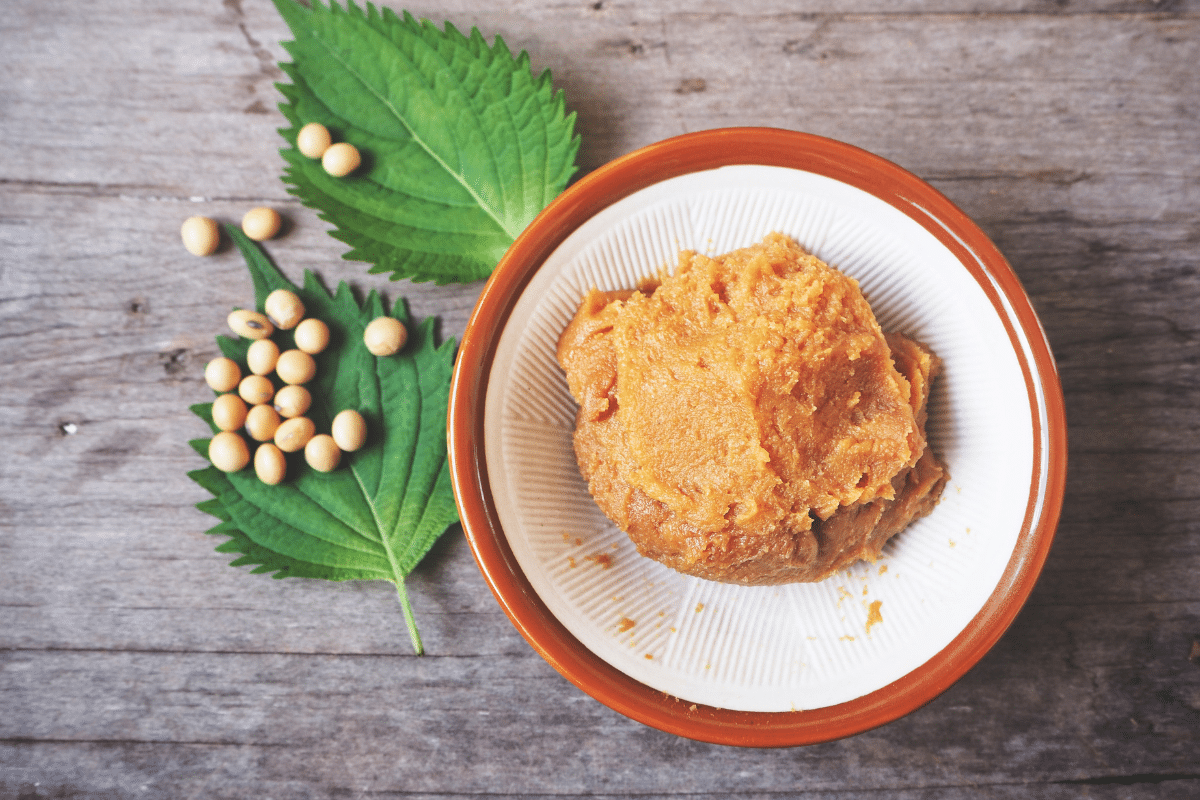
As mentioned earlier, tamari is a by-product of making miso. So, if you’re seeking tamari’s rich umami flavor, you can use miso paste, as it offers a similar flavor profile.
Just note that miso paste is considerably thicker than tamari. Hence, diluting it is recommended to mimic a consistency that’s similar to soy sauce.
Pros:
- It has the distinct umami flavor tamari provides to dishes.
- Miso is a versatile replacement that can be used for broths, stir-fries, and marinades.
Cons:
- You need to do an extra step of diluting it.
- Miso paste is not necessarily a common household ingredient for many.
Oyster sauce
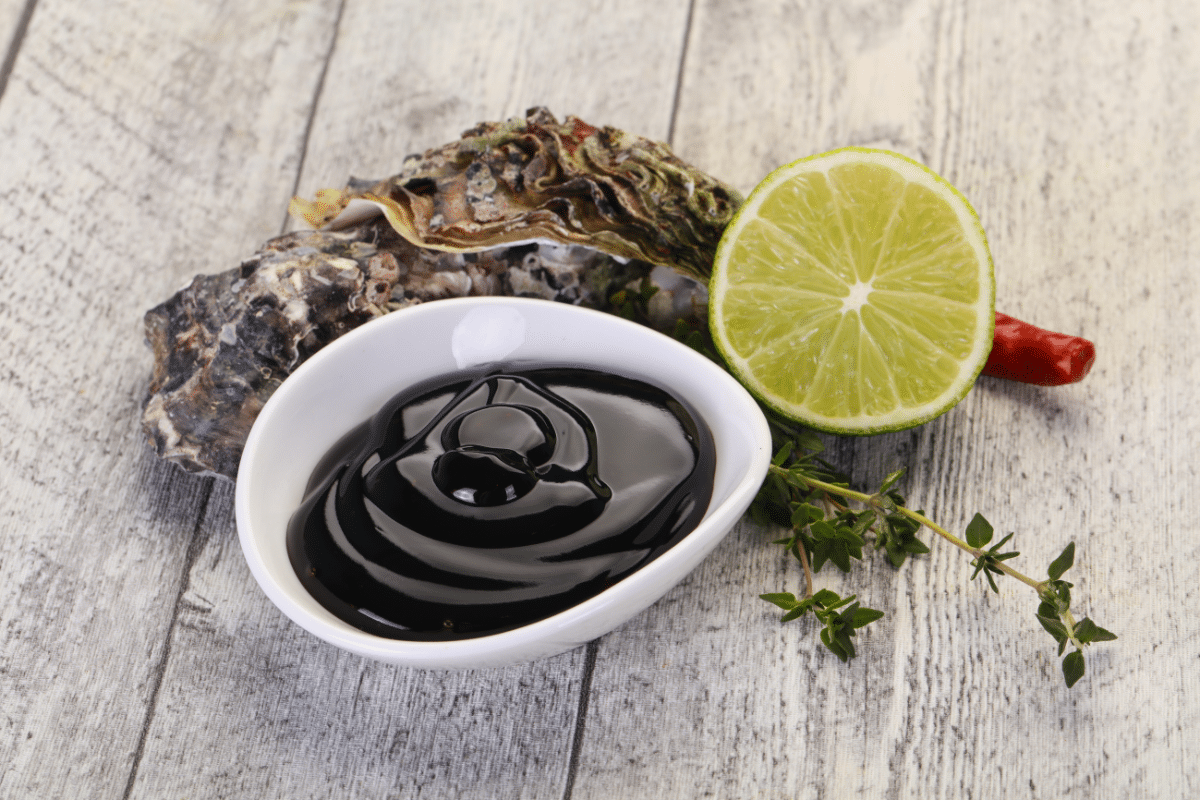
Oyster sauce has a thick, syrup-like consistency and primarily adds sweetness, saltiness, and a tangy taste to your dish. Despite its name, it doesn’t actually taste that fishy at all.
Just remember that oyster sauce is thicker than tamari. Hence, don’t use it as a 1:1 ratio for the amount of tamari required in a recipe.
Pros:
- It’s common and easy to find in the grocery aisles.
- Oyster sauce is relatively cheap and has a long shelf life.
Cons:
- This sauce is unsuitable for individuals with shellfish allergies.
- Oyster sauce is sweeter than tamari, which may make it unsuitable for recipes that don’t have a hint of sweetness.
Hoisin Sauce
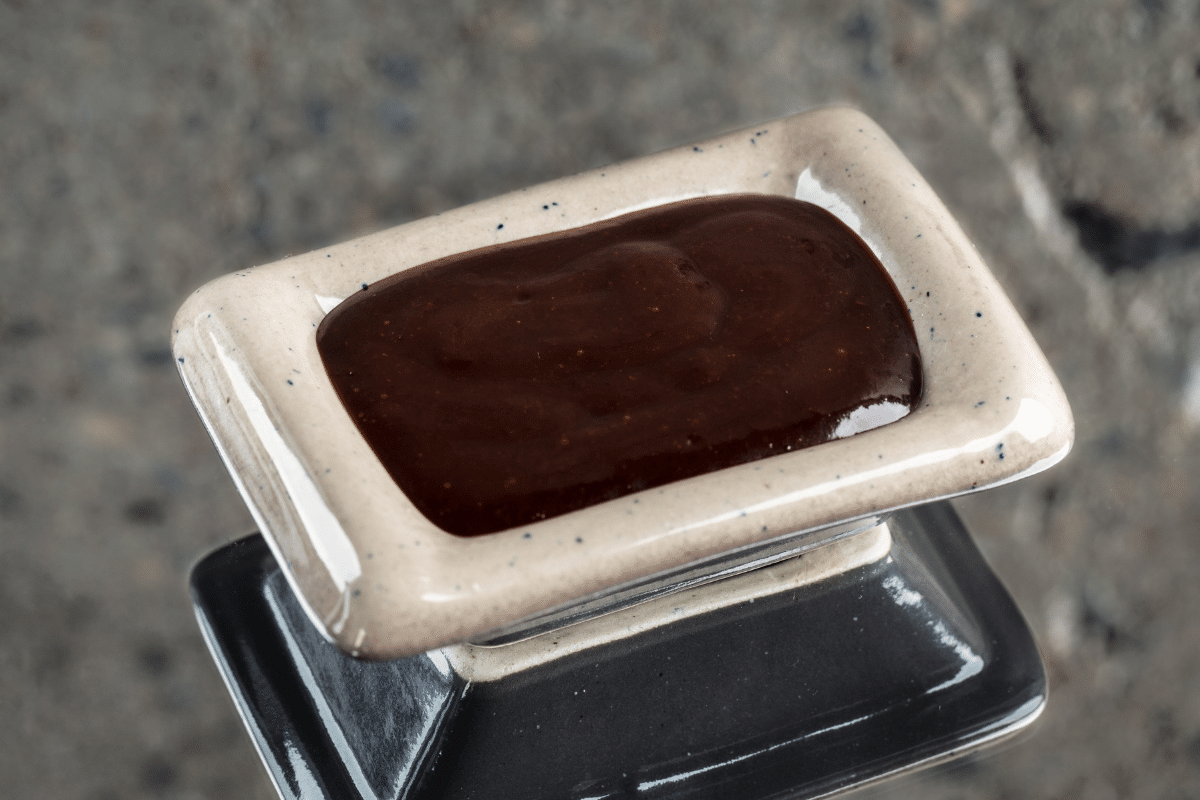
Another excellent tamari substitute is hoisin sauce. Like oyster sauce, it provides deep umami flavors and hints of sweetness, spiciness, and tanginess to your dish. As hoisin is thicker than tamari, you can expect this substitute to add more depth to your recipes.
As a tamari replacement, hoisin sauce is best used in meat and seafood recipes.
Pros:
- Most store-bought hoisin sauces are vegan.
- This sauce retains the familiar umami taste found in tamari and other Asian-style soy sauces.
Cons:
- Hoisin sauce has a sweeter profile than tamari, which makes it not the best alternative for savory dishes.
- The texture of hoisin sauce is different than tamari, so the consistency of your recipe may vary slightly.
Fish Sauce

Commonly used in Southeast Asian dishes, fish sauce is a condiment made from fermented fish. It’s capable of bringing out the umami and salty flavors of tamari. However, take note that fish sauce generally tastes and smells stronger in comparison.
When using this alternative, a good starting point is to use only half a teaspoon of fish sauce for one tablespoon of tamari required in the recipe.
Pros:
- This sauce has a long shelf life and does not need refrigeration.
- Since its texture resembles tamari, you can use fish sauce in various dishes, ranging from stir-fries to marinades and dipping sauces.
Cons:
- It’s not a suitable option for vegans.
- The fishy smell and taste of fish sauce can be too overwhelming in certain dishes.
Teriyaki Sauce
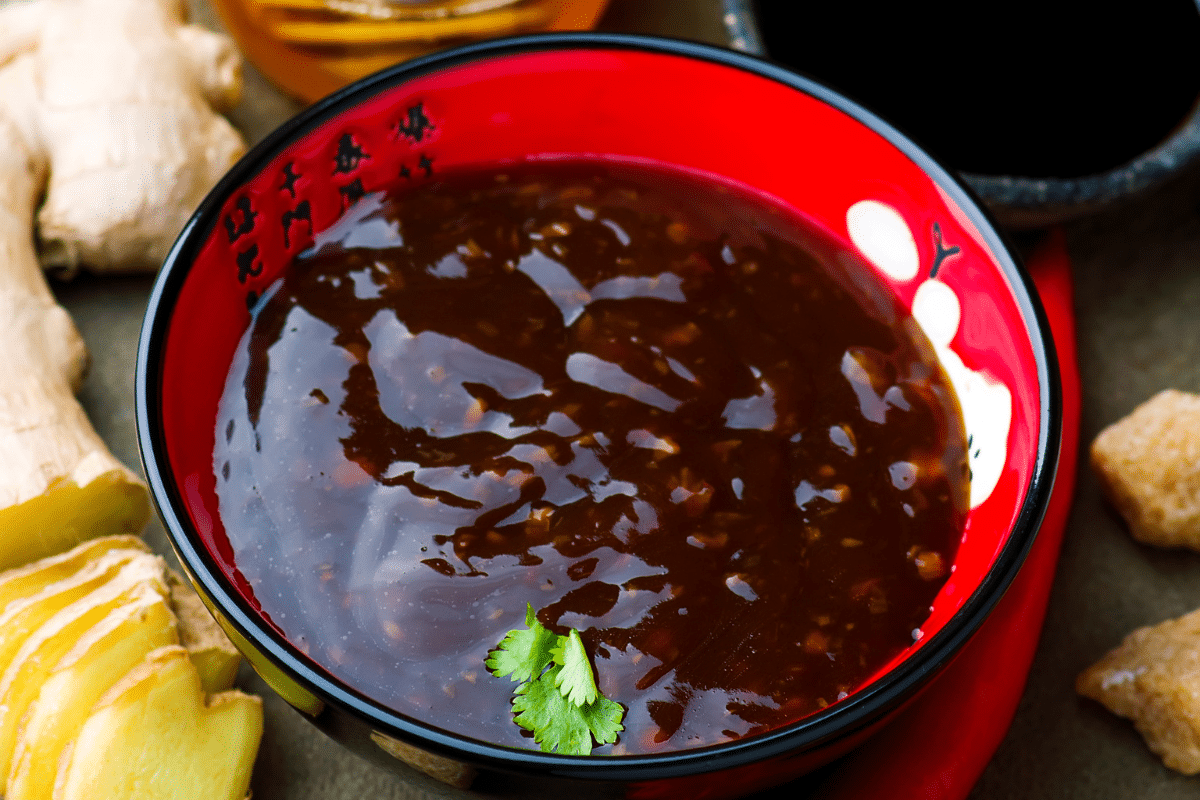
Another substitute that highlights a sweeter flavor than tamari is the teriyaki sauce. This sauce is made by mixing sugar, ginger, mirin, and soy sauce. Hence, it balances umami flavors with subtle sweetness and sourness.
Teriyaki does not taste exactly like tamari, saltiness-wise. However, I found that it’s a great substitute when used as a glaze for meat, vegetables, and seafood, especially if you’ve got kids who have a sweet tooth.
Pros:
- This sauce is easily found in supermarkets.
- Teriyaki does not usually contain common allergens, such as shellfish.
Cons:
- The thicker nature of teriyaki sauce may not be desirable in recipes that take advantage of tamari’s thinner consistency.
- As teriyaki often contains a lot of carbs, it may not be suitable for people who are watching their sugar intake.
Coconut Aminos

If you’re looking for a tamari substitute with a thin consistency, coconut aminos will be a great option. As a common soy sauce alternative, this sauce tastes mildly meaty and features amazing umami flavors like tamari does.
My favorite part about coconut aminos?
I can use it as a 1:1 substitute for tamari. So, there’s no need for fancy math when using it for recipes.
Pros:
- It’s gluten-free, soy-free, and vegan.
- The color and consistency of coconut aminos are very similar to those of tamari.
Cons:
- Tamari has a richer umami flavor than coconut aminos. So, the overall depth of your dish may vary using this substitute.
- Unlike other substitutes for tamari, coconut aminos are not really considered common household ingredients.
Gluten-free Alternatives To Tamari
My most-recommended substitute for tamari is coconut aminos, which are made from coconut sap and do not contain wheat ingredients. Their flavor profile, color, and texture are very similar to that of tamari, making them suitable for almost every recipe.
Miso paste and fish sauce are also typically gluten-free. However, it’s important to exercise caution and read the labels before purchasing these condiments, as some variations may not be gluten-free.
For instance, certain miso paste products include barley, which contains gluten.
How To Adjust Recipes When Using A Tamari Sauce Substitute
When using tamari substitutes, the best way to adjust your recipes is to season to taste. Not all brands of these alternative ingredients have the same flavor profile. Hence, following recipes without tasting as you go may significantly change the taste of your dish.
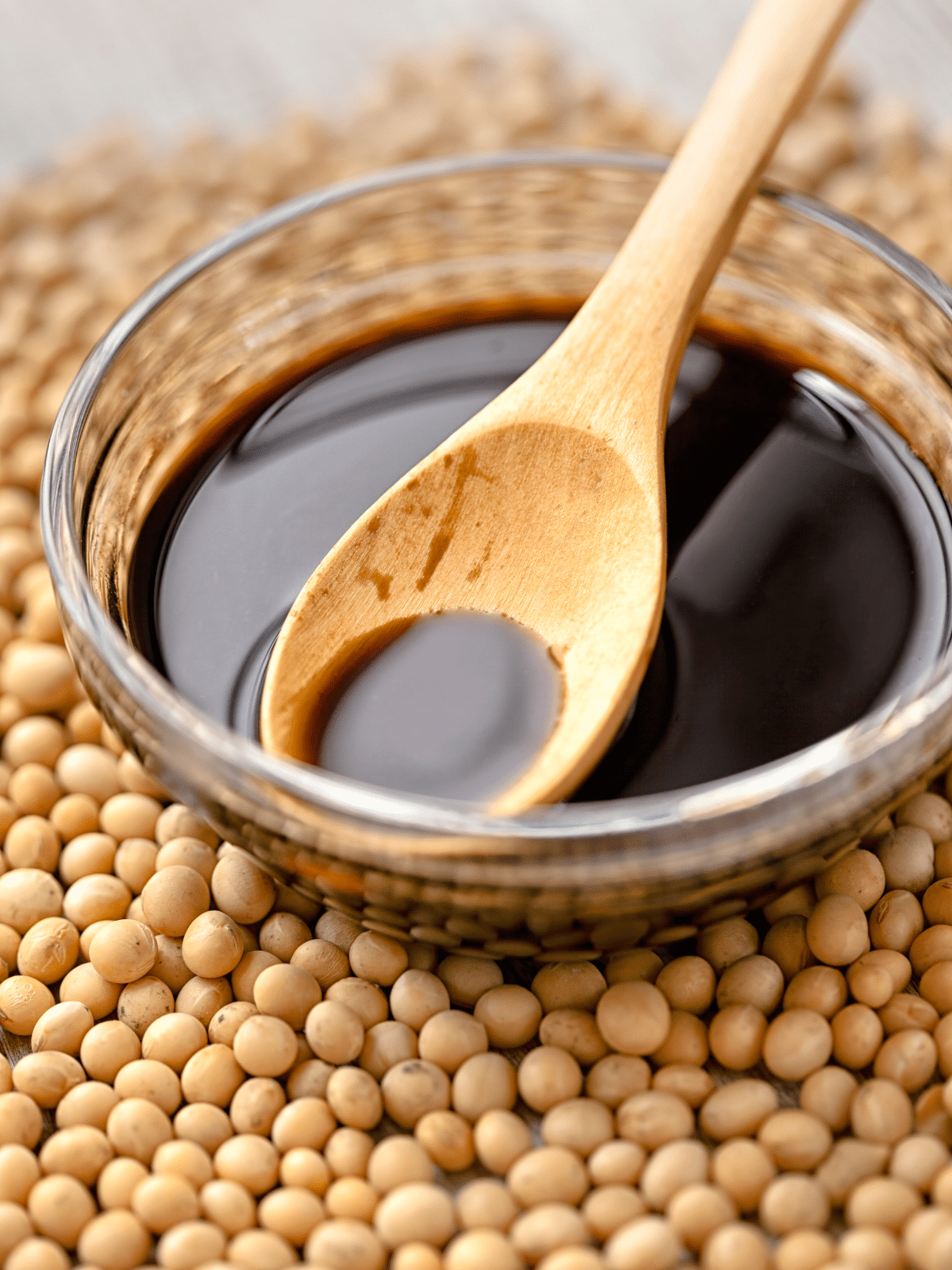
On that note, it’s always best to gradually incorporate your tamari substitute as you cook. You can always add condiments if your food is under-seasoned, but there’s not much you can do when you’ve already overwhelmed your dish with a specific flavor.
Experimenting With Different Ingredient Substitute Ideas
Substituting ingredients is not only useful for mimicking a flavor of a specific ingredient. This process is a creative opportunity for home cooks to explore new flavors, diversify dishes, and accommodate dietary restrictions or taste preferences.
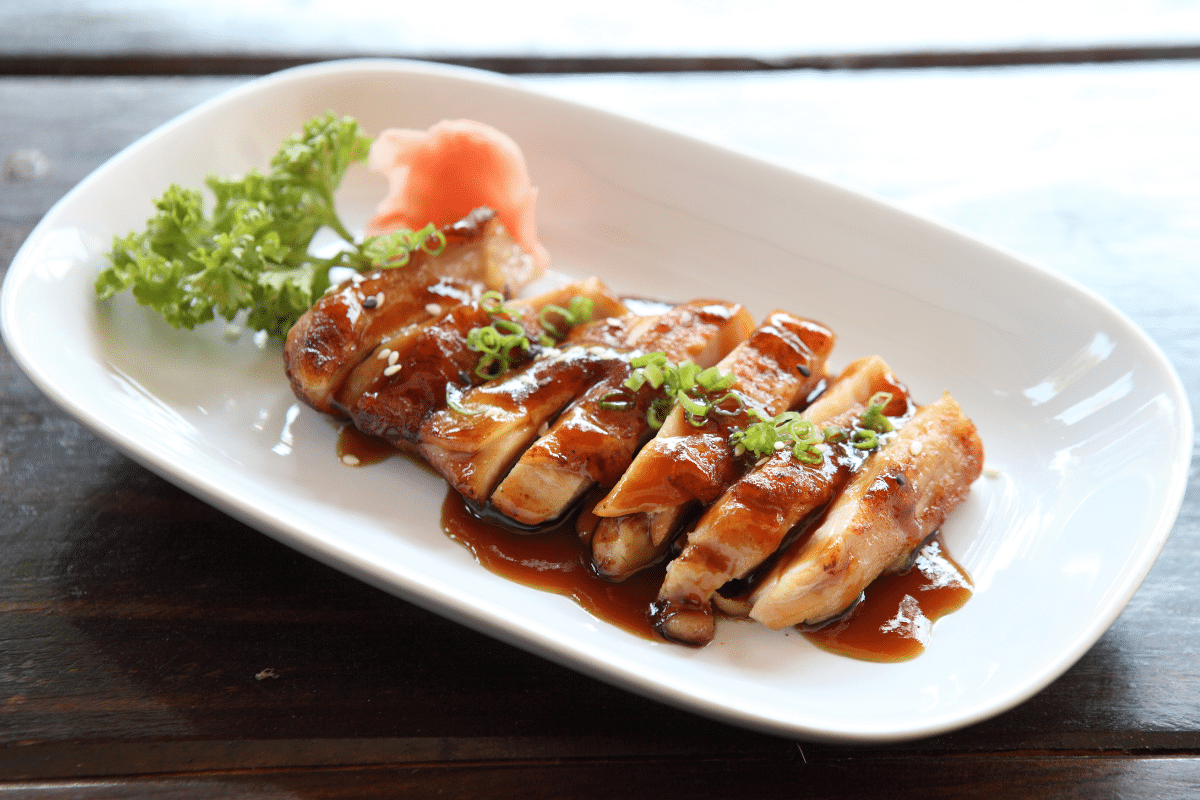
So, feel free to experiment using various ingredient substitutes, not just for tamari but for other sauces and condiments as well. By experimenting with different substitute ideas, you can discover unique combinations that transform familiar recipes into exciting culinary adventures.
Enjoy The Goodness Of Umami Without Tamari

You don’t need to avoid a recipe that calls for tamari just because of dietary restrictions or simply because you’ve run out of this Japanese sauce.
Whether you’re preparing stews, stir-fries, or marinades, the substitutes above can easily replace tamari and may even improve the overall taste of your dish!
Just remember, always season to taste, as these substitutes can bring out flavors tamari does not have. Additionally, be prepared to adjust other seasonings you use, as some alternatives may lack specific flavors that tamari typically enhances.

